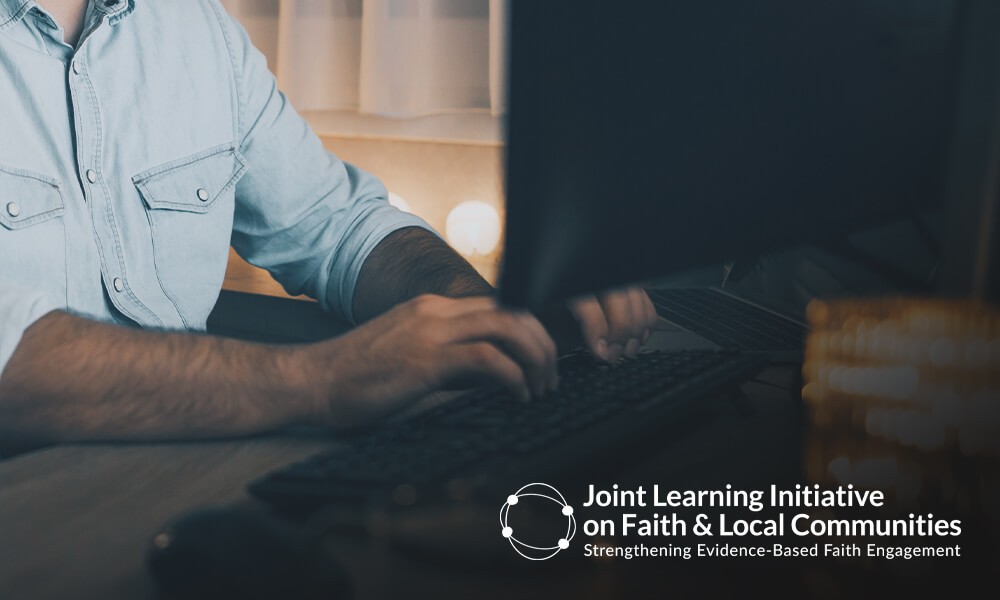Faith actors and communities can serve as first responders to violence against children (VAC). They are able to report and refer cases of abuse, provide emergency support, offer psychological and spiritual counseling, and present communities with important child protection information. This page presents examples and resources that demonstrate how faith actors can and are serving as first responders to VAC.
(I)t is a total strength to the whole thing as you have loads of places where they are just responding to local need… The trouble is when you look into some of the models, how much thought has really gone into this? (AB, safeguarding expert, Christian, England)
Related page and resources: Faith actors are important first responders to violence against children during the COVID-19 pandemic.
View the JLI’s Online Roundtable on Faith Actors as First Responders to Violence Against Children: See speakers info here
https://www.youtube.com/watch?time_continue=1&v=C0MaeCX0KxU&feature=emb_titlePractice Examples:
Example 1: Walking with Wounded Children
- Organization: Petra Institute in South Africa
- The Project: The Walking with Wounded Children program aims to equip faith leaders to work with vulnerable and traumatized children by providing psychological/counseling training. The program involves discussion, individual and group study, role play, and learning by doing. Trainees of the course work to build relationships with children under the supervision of the program.
- Results: In equipping faith actors with the appropriate skills, building meaningful relationships with children, and by promoting cascade learning amongst the community, the program has found that faith actors are able to play a determining role in establishing communities where children feel safe.
- Watch this JLI Webinar to hear Reverend Dirk Coetsee present on the Walking with Wounded Children program.
Example 2: The Butterfly Project: Listening to victims
- Organization: Chab Dai
- Timeline: 10 years long longitudinal study, since 2010. Project situation: towards the end.
- The Project: The project partners with faith-based care facilities that provide survivor support in order to understand what makes a program effective. The Butterfly Project intends to determine indicators of success in the different programs and approaches by using participants’ perceptions of their experiences to establish their desired participation in society. The programs map the progress of these participants, which makes it possible to assess correlations between the children’s outcomes, the programs set by the shelter they attended, and other possible factors.
- Results: The project has yet to conclude, but the program’s Resilience Thematic Report indicated that although some participants refer to a connection to a religious community as a positive factor, the same subjects make the same reference about their family connection. As a result, it is not possible to conclude if the positive perception is linked specifically to the participation in a religious community or simply having a connection per se. Further, the report indicated that the participants’ main and often only connection to the religious community is through the shelter and that because almost all of the NGOs responsible for providing services were Catholic, the Buddhist majority felt socially isolated from the culture and spirituality in their reintegrated communities. Lastly, even though the project is still ongoing, and no thematic report has been dealing deeply with the religious factor, the Chab Dai Organization is currently working on this theme and will produce a report soon.
- See Chab Dai – Coalition’s Butterfly Longitudinal Research “Top 10” Findings – 2018 and find the full case study in JLI’s 2019 Scoping Study (Palm, S. and Colombo, F. 2019, pg. 13).
Example 3: Education and Rescue Centers
- Organization: Catholic Church in the Suguta Mar Parish in Kenya
- The Project: Catholic Church in the Suguta Mar Parish operates an education and rescue centre to accommodate girls who are survivors who may have fled their homes as a result of forced marriages and other forms of GBV. Counselling is also provided
- See JLI’s 2019 Scoping Study for more information (Rutledge, K. and Eyber, C. 2019, pg. 23).
See Scoping Study’s next key message
haga clic aquí para español

